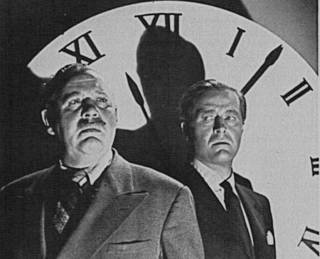
did you see more glass?
Stan Getz, Diaper Pin.
There is a moment upon going through an artist’s early works when you suddenly find, like a seam of sunlight in a cloud, the sound of his mature voice. Like the occasional jeweled line buried in Shakespeare’s dull Henry VI plays, or Jimi Hendrix’s guitar in the wings of Isley Brothers records.
“Diaper Pin,” recorded when Stan Getz was 21, is one of the first times you can hear his classic sound, the strange combination of airiness and ballast in his tone. “Diaper Pin” is Getz’s reworking of Harold Arlen and Johnny Mercer’s “That Old Black Magic,” in which Getz overhauls the song completely with a host of choice phrases. He seems to think in melody, to play the sax as though he was talking, memorably, at a party somewhere.
The ever-lessening time constrictions on recorded music can alter musical language. Getz, for example, comes from the last generation of jazz musicians who grew up bound to the three-minute impositions of the 78 RPM record. Because time was so tight, arrangers of big band recordings strictly rationed the soloists. If you were Coleman Hawkins, you could get the heart of the song; if you were a greenhorn in Woody Herman’s Herd, you were lucky to get four bars. So the most ambitious young players crammed whatever they could into their fifteen allotted seconds–Getz’s endless melodic resources, for example, are owed in part because he had to come up with a new hook, a startling phrase, in every measure to catch the listener's ear.
By contrast, in our post-78 RPM, post-33 RPM, post-vinyl, even post-CD age, musicians are free to meander for as long as they would like. I’m reminded of an endless performance that I endured years ago in which one tenor saxophonist was vying to see which would go first--his lungs or his audience.
“Pin” was recorded in New York City on October 25-26, 1948, with Getz on tenor sax, Al Haig (p), Jimmy Raney (g), Clyde Lombardi (b) and Charlie Perry (d). It is on this good early collection.
On the last day of January, 1948, you might have been running through Grand Central Station to catch a train in the late afternoon, stopping for a beat to grab the latest New Yorker off the newsstand. Sinking into your seat, catching your breath, you glance at the cover. Kids sledding in snow. You thumb the pages, and as you stifle a yawn, your eyes fall on what looks like a short story.
“She was a girl who for a ringing phone dropped exactly nothing. She looked as if her phone had been ringing continually ever since she had reached puberty.”
You look up at the top margin to see the story’s title. A Perfect Day for Bananafish.
No comments:
Post a Comment